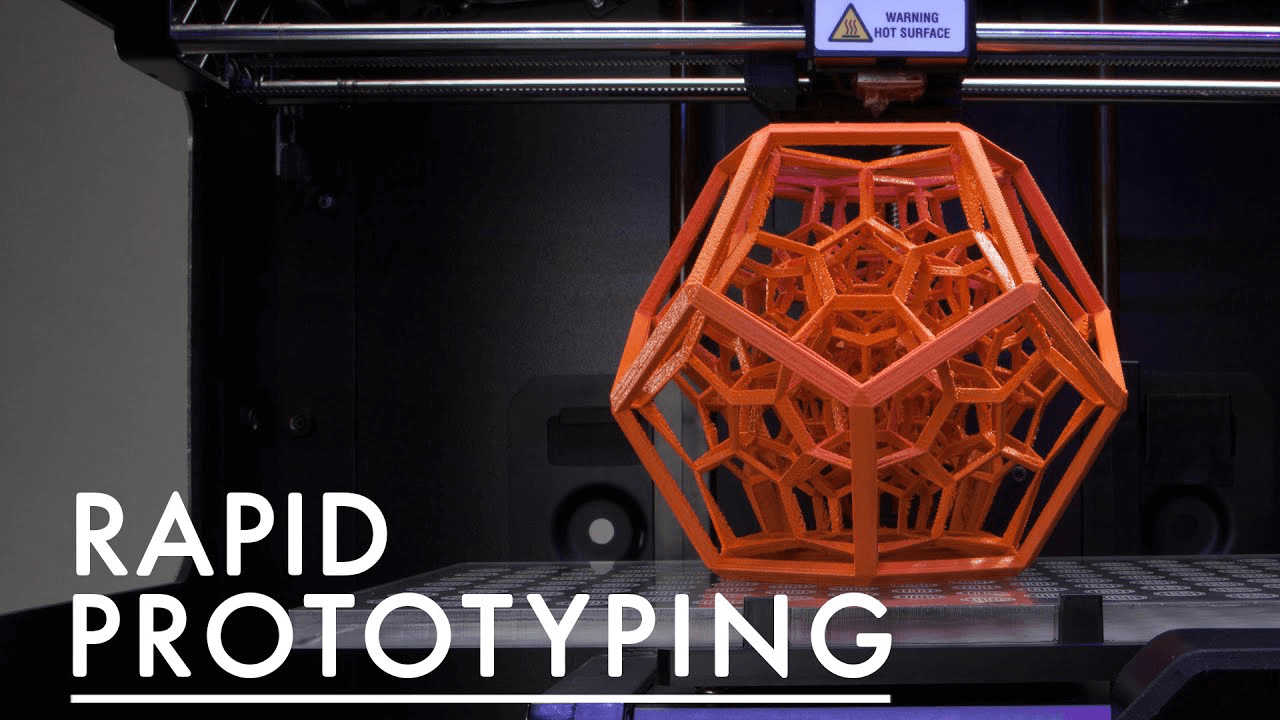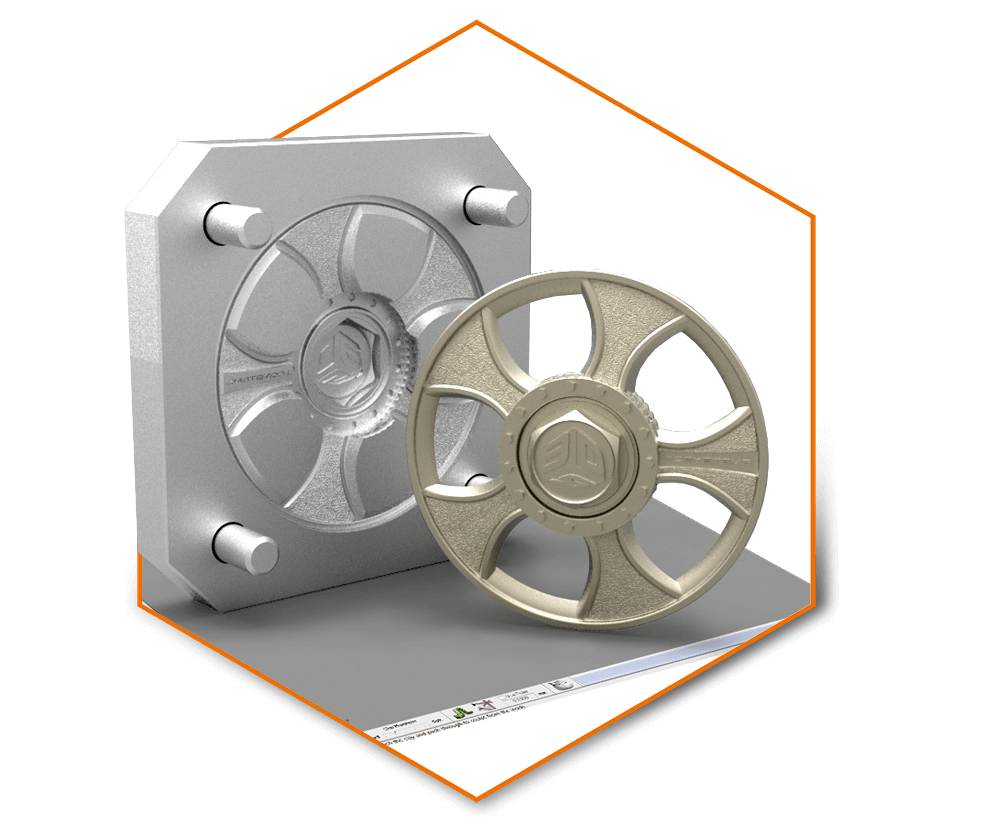5 Factors for Choosing Professional Rapid Prototyping Method in 2020
2020-06-07Professional Rapid Prototyping: 5 Technique Selection Factors
A professional rapid prototyping manufacturer fully comprehends the fact that the failure or success of the prototype greatly depends upon the selection of prototyping techniques. When it comes to rapid prototyping, you have several ways to make up the product design.
You can either go with the simple cardboard mock-ups or the full functional machine assembled product. For modern-day products, prototyping has become imperative. This is crucial for new product development.
Le prototypage rapide offre la possibilité de valider votre conception. Il vous fournit un modèle approximatif, vous permettant ainsi de tester ses fonctionnalités. De plus, vous auriez une idée précise de l'apparence, de la sensation et du fonctionnement de votre produit dans un environnement en temps réel.
Dans cet article de blog, nous allons parler de prototypes à base partielle. En termes plus simples, nous vous expliquerons comment vous pouvez utiliser des pièces individuelles pour créer un prototype au niveau du système.
Cinq facteurs clés pour un processus de prototypage rapide professionnel
Étant donné que chaque produit est unique, il offrira donc une expérience de prototypage unique. La différence entre chaque produit, projet et élément de conception de produit doit être dûment prise en compte.
A certain prototype that worked well for an XYZ product, might not generate the same effective results of your product. Therefore, you need to consider the five key factors below to make the right decision.
- Objectif
- Qualité
- Quantité
- Complexité
- Coût
Let’s look deep into these factors and understand why they are important for choosing your next prototyping process.
Objectif
According to Ulrich and Eppinger, there are four reasons for creating a prototype within the engineering and development of product design as well as the product. These four reasons include communication, learning, milestones, and integration.
The purpose of prototyping varies depending on the development stage of the product. Generally, there are four different product development stages. Every stage of product development has its own features as well as the functionality required to eliminate any sort of risk.
This would give away the fidelity type of the prototype i.e. low-fidelity or high-fidelity. The first aspect of the project prototype purpose would depend upon either the risk mitigation exercises or the planned tests.
For instance, customer interaction feedback, or test types, etc. In case, the prototype is going to go through rigorous testing, then it is important to focus on the material. After all, the material would be a deciding factor in choosing the rapid prototyping technique.
Next, you need to focus on the functional aspect of the prototype. The selection and assembling would greatly depend upon the functional expectations of the prototype. Such as, do you want any moving part of your plan to perform functional testing.
It is highly less likely that your prototype becomes successful without any tweaks. Thus, you need to consider the changes and modification factors in your mind. It is important to consider how easy or difficult it would be to make changes to the prototype.
Doing this would also aid in deciding the right prototyping technique.
The Product Development States
Product Clarifying and Planning Task
This is the stage where you will have to provide early proof of concepts. Use industrial design prototypes, demonstrations or mock-ups.
Prototyping Technique
- 3D Printed Parts
- Carboard Mockups
- CNC Machined Foam Models
- Assemblies (SLS, SLA, FDM, etc)
Conceptual Design
At the conceptual stage, you generally require scaled parts. In some cases, you would need assemblies of the design as well as limited functionality and user interface.
To get the shape, and feel of the product, you can use the FDM part. In case, you want more accuracy, you would have to move to the next level of 3D printing. Either choose the SLS, or go with the SLA. You also have the option of poly jet parts.
In case, you want metal parts, then using CNC machine at this stage would be an excellent thing to do. Furthermore, you can even consider sheet metal fabrication. However, sheet metal fabrication works in limited situations.
Embodiment Design
Dans cette phase, vous explorerez toutes les fonctionnalités du prototype. Un fabricant professionnel de prototypage rapide examinerait son ajustement, sa forme et ses fonctions. Par conséquent, il est impératif de se concentrer sur les détails. À ce stade, les prototypes seraient aussi proches que possible du produit final.
Ils contiendraient plusieurs parties. De plus, la phase de test se développe ici. Vous ne pouvez pas vous limiter à une seule technique de test. Au contraire, vous auriez besoin de différentes unités à des fins de test différentes.
Vous envisagez également la technique finale de fabrication à ce stade. La raison en est que vous devrez éventuellement le stimuler. Concentrez-vous également sur l'impression haute résolution telle que SLA et SLS pour les pièces en plastique.
Paying heed to vacuum casting is also important. Both the DMLS and SLM parts are perfect for simulating casting parts.
Detailed Design
Any prototype developed in this phase would go for functional testing. Moreover, it would be used for pre-production pilot runs.
Professional rapid prototyping manufacture would use vacuum casting to prototype injection molding parts. In the case of machined plastic parts, they would be using the 3D printing technique.
Qualité
As we mentioned above, the product accuracy and fidelity required would dictate the type of post-processing or process, you would need for the prototype. You need to focus on the quality of your prototype as well.
Although, high-fidelity prototypes are expensive, however, professional rapid prototyping manufacture consider them as a return on investment. For instance, you want to have a thread feature, we recommend using SLA in instead of the FDM. Unfortunately, SLA would cost you more.
Prototype Usage
The type of technology you use would also depend upon prototype usage. For example, if you plan to use the parts frequently, you should not consider self-tapping holes or 3D printed threaded holes. On the contrary, it would be used to opt for the metal inserts or machined inserts.
Material Selection
La qualité du prototype dépend grandement de la matière première. Vous devez donc être attentif à l'aspect de la sélection des matériaux de la phase de développement. Nous ne recommandons pas les pièces fabriquées additives, en particulier lorsqu'il existe un lien entre certaines propriétés du matériau et les éléments fonctionnels du prototype.
Voir le tableau ci-dessous pour le choix des matériaux de base pour les différentes techniques de fabrication.
| impression en 3D | CNC | Coulée sous vide |
|
TPU, ASA, ULTEM, ABS, PLA, Nylon |
PEEK, polycarbonate, nylon, ABS | Nylon HT, ABS
ABS, Nylon Nylon HT |
| Inconel, titane, acier inoxydable, aluminium | Laiton, titane, acier inoxydable, aluminium | N / A |
Il est important de tenir compte de la tolérance des pièces de prototypes surtout quand un certain prototype compromet plus d'un. La prise en compte de la tolérance offrira également une facilité d'intégration.
Quantité
Another important factor that plays a vital role in deciding the type of prototyping technology is quantity. There are certain techniques that would be cost-effective for smaller quantities and vice versa.
See the following rules that apply.
Plastic Parts
| Prototype processes | |||
| Plastic parts | Quantité | ||
| Low (1's) | Medium (10's) | ||
| Size | Large | impression en 3D | CNC Machining
Vacuum Casting |
| Small | impression en 3D | CNC machining (simple) 3D printing (complicated) |
|
Metallic parts
| Prototype processes | |||
| Metallic Parts | Quantité | ||
| Low (1's) | Medium (10's) | ||
| Size | Large | L'usinage CNC | L'usinage CNC |
| Small | 3D Printing
L'usinage CNC |
Investment Casting
L'usinage CNC |
|
Complexité
The complexity of the product would help aid the rapid prototype process selection process. Different processes offer different complexity. You just need to focus on the one that would suit your prototype requirement.
Coût
Lastly, you need to focus on the resources available. After all, the prototype and the resources go hand-in-hand. You need to consider the man-hours, the money, and the time you would require to create a high-quality prototype.
Focusing on these aspects would also help you choose the right prototyping technique.
À emporter
As a professional rapid prototyping manufacturer, we keenly focus on the above 5 key factors. We fully understand that choosing the right prototyping technique would yield high-quality results. Therefore, we pay close attention to the purpose of your prototype.
In addition, we would pay close attention to the quality especially when it needs to be performed in a real-time environment. Our state-of-the-art technology helps us in handling prototyping of all sizes and shapes.
We have the ability to handle low-volume prototyping as well as mass production without having any difference in terms of quality and perfection. What more is that we choose the prototyping technique while keeping in mind the cost and the complexity of your design.
After all, every technique cannot produce high-quality, sophisticated, and complex designs. To learn more about us click here.






